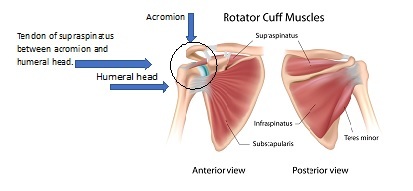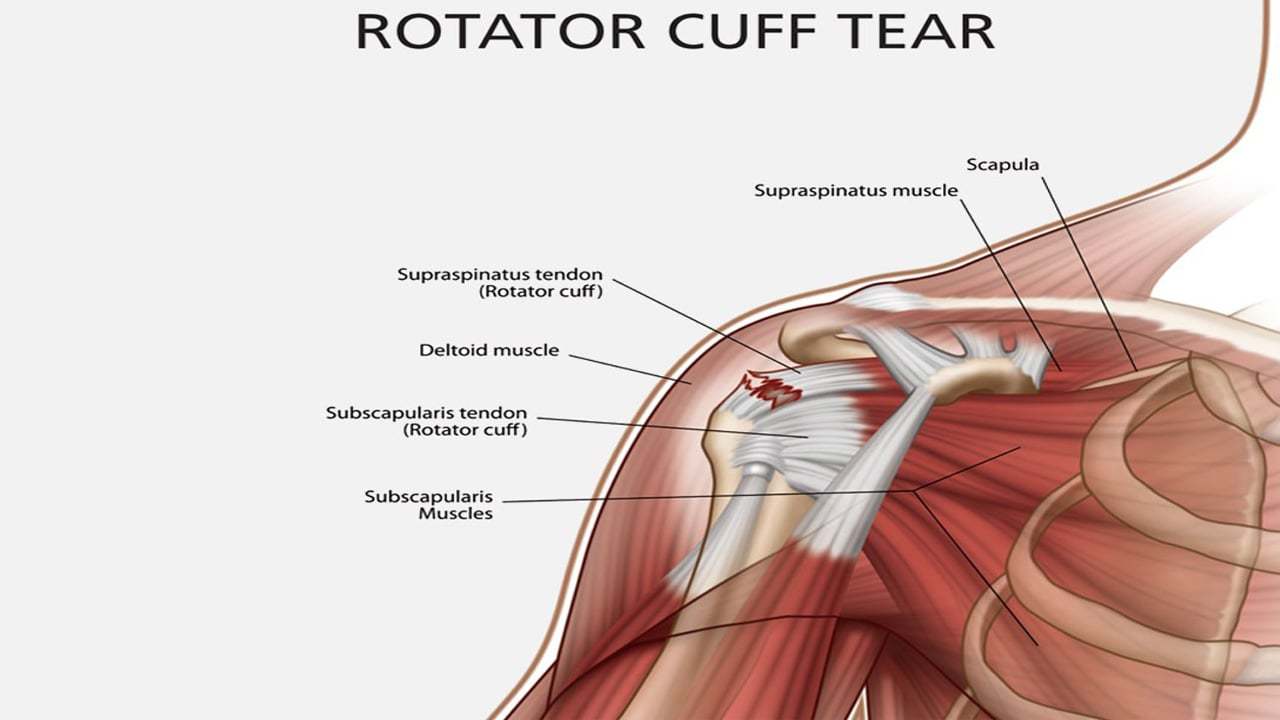January 24, 2017
The rotator cuff is one of the most important structures within the shoulder. It helps to ensure normal biomechanics of the shoulder (glenohumeral) joint. In part one of this series we discussed what the rotator cuff is, as well as its structure and function. If you missed it, click here: Rotator Cuff Series: Part I. As previously stated, the rotator cuff is activated whenever we move our upper arm to provide stability. If the rotator cuff becomes damaged and does not function normally, it can lead to altered biomechanics and further exacerbation of symptoms. In part II of this series, we are going to discuss common injuries to the rotator cuff.
There are multiple ways to injure the rotator cuff: overuse, degenerative changes from aging, trauma from a fall or sustaining at hit. These can lead to rotator cuff tendonitis, tendinosis, or rotator cuff tears.
Rotator Cuff Tendonitis
Rotator cuff tendonitis refers to micro tearing and inflammation of the tendon. The tendon is the structure that connects the muscle to the bone. Tendonitis in the shoulder usually is a result of overuse/repetitive activities, where contraction of the muscle causes a continuous workload on the tendon. It can occur from repetitive lifting, reaching, pulling, pushing or throwing.
Sign and symptoms of rotator cuff tendonitis:
Shoulder pain at rest
Shoulder pain when lifting
Shoulder pain with reaching
Pain when lying on the affected side.
It is usually an acute episode that occurs after performing a task requiring repetitive movement. Shoulder impingement (pinching of structures between two bones in the shoulder- see image below) can also lead to rotator cuff tendonitis. Click here Shoulder Impingement for more information. Once the tendonitis is identified and the right steps are taken, then the tendon should heal within 4-6 weeks.

Rotator Cuff Tendinosis
Rotator cuff tendinosis is similar to tendonitis in that it is micro tearing and irritation to the tendon; however, there is less of an inflammatory response and more changes to the tendon on the molecular level. Tendinosis occurs from repetitive damage to the tendons that never fully healed from the initial injury. We see an increase in immature type II collagen fibers (fibers that help repair damaged soft tissue), and reduced alignment and connections of the fibers, which makes the tendon weaker and more susceptible to re-injury. Tendinosis is caused by repetitive movements as well, but typically over a longer period of time. These repetitive movements are usually related to our daily tasks, work duties and recreational activities that create stress to the rotator cuff tendons.
Sign and symptoms of rotator cuff tendinosis:
Pain with lifting
Pain with reaching
Pain with pushing/pulling
Pain with lying on the affected side.
Once the tendinosis is identified, healing can take up to 3-6 months. The discrepancy in healing time compared to tendonitis, is because in tendinosis we have to correct the biomechanical flaws that are causing the repetitive stress, as well as change the molecular activity in the tendon to improve healing.
Rotator Cuff Tear
There are two main types of rotator cuff tears: a partial thickness tear and a full thickness tear. A partial thickness tear is when the tear goes though part of the rotator cuff tendon (think of it like a frayed rope). There are still fibers that are connecting the muscle to the bone, but the tendon is weakened. A full thickness tear is when the tear goes all the way through the tendon and there is no longer a connection between the muscle and the bone (see image below). These injuries can be caused by repetitive irritation, age related changes and/or trauma to the shoulder. A full thickness tear would need surgery to heal; however, a partial thickness tear may response well to physical therapy.

Signs and symptoms of a rotator cuff tear:
Difficulty lifting arm
Shoulder pain at rest
Shoulder pain when attempting to lift/reach
Shoulder pain when lying on the affected side
In our final series of the rotator cuff, we will discuss how we treat each condition, and some ways to change daily habits to reduce risk of injury. Portland Physical Therapy is located at 959 Congress St. in Portland, ME. We specialize in orthopaedic and spine injuries, including issues with the shoulder and rotator cuff. If you suspect you or someone you know is suffering from a rotator cuff pathology, call our office at 207.828.4455 for more information or to set up a consultation.
Work Cited
Bass E. Tendinopathy: Why the Difference Between Tendinitis and Tendinosis Matters. International Journal of Therapeutic Massage & Bodywork. 2012;5(1):14-17.
Shin KM. Partial-Thickness Rotator Cuff Tears. The Korean Journal of Pain. 2011;24(2):69-73. doi:10.3344/kjp.2011.24.2.69.


